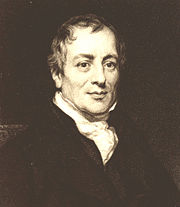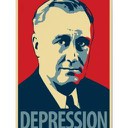A Return to Commodity Money?
![]()
By Stephen Berry
Paper Money Collapseby Detlev Schlichter. John Wiley, 2011, $39.95.
“Since 1971 the decline in the purchasing power of the pound and the dollar – two of the oldest currencies in the world – has been the sharpest in their long history. Debt levels have risen sharply and the financial industry has greatly expanded. As economists Carmen Reinhardt and Kenneth Rogoff demonstrated in their extensive study of financial crises, the number and intensity of international banking crises has risen markedly since 1971. Japan experienced an enormous money-driven housing boom in the 1980s and has still not recovered from the dislocations this created. The United States and Western Europe (with the exception of the Scandinavian countries) have, until recently, escaped major crises.” (p. 9)
This quotation encapsulates both a strength and weakness of this book. Detlev Schlichter is dealing with a hot topic – the role of fiat currencies in modern economies. This should be especially interesting and instructive when set against the backdrop of the major economic crisis which began in 2008 and is still unfolding. But parts of the book (published 2011) read as if they were written before 2008 and have barely been updated to reflect subsequent events. This, in turn, leads to a more general weakness. Schlichter had an excellent opportunity to illustrate his ideas using the crisis which began in 2008, but seems loath to do this, preferring instead to produce what is largely a text book on money and the current fiat currency system.

David Ricardo
Schlichter is a supporter of the Austrian School of Economics and will therefore find a sympathetic hearing from many Libertarians and Classical Liberals. The British Currency School (led by Ricardo) and the Austrian School were clear that if you wanted to avoid major recessions, you had to also avoid artificial investment booms generated by cheap credit. (p. 7) The book may be taken as a critique of the approach to recessions taken by governments since the Second World War.
Fundamentals of Money
Schlichter begins with an introduction to money and makes a number of points which may surprise the reader of today. He points out that societies are perfectly capable of growing economically with an inelastic supply of money. “Once a good is established as money, no additional quantities of this good are needed.” (p. 32)
Schlichter also covers the unique position of the money producer. “He can produce money very profitably, and although the public has no need for any additional units of his product, as any demand for money is demand for readily exercisable purchasing power and can easily be met by automatic changes in the purchasing power of the monetary unit, the money producer can essentially place any amount of his product.” (p. 39)
We also learn that Schlichter is opposed to the denationalisation of money. He thinks the standard reasons why a competitive market of entrepreneurs (reducing the cost of production etc) benefit society do not apply to money. (p.41) A society with multiple media of exchange would lose the full advantage of using money. “Hayek's proposal to go back to multiple exchange monies even in societies that already benefit from the use of one unified medium of exchange would deprive money users of some essential advantages of using the established form of money and for this reason, the public may simply reject it.” (p.44) ‘One size fits all' is a good approach for money – bad for other goods and services. Schlichter's criticism of Hayek is powerful and well taken.

Schlichter thinks that gold and silver would be chosen as money in a free society. Each country would issue its own gold-backed currency, but pounds and dollars (for instance) would simply denote specific units of gold. The Gold Standard 1880-1914, he feels, was the closest we have come to global money.
Fractional Reserve Banking
Schlichter explains that the long-term expansion of credit is very different according to whether it is backed by savings or the result of money creation. But he refuses to take the Rothbardian position that fractional reserve banking should be outlawed as essentially dishonest.
A fractional reserve system operates when a bank lends out money which is not fully backed by the reserves in its vaults. If this is done openly, with no deposit insurance from the government, no bailout of imprudent banks and it is made clear that a deposit account bearing interest is an investment and may be lost – a libertarian, in my opinion, should no more oppose this than he would a stock investment.
Money Injections
Schlichter looks at money injected into the economy with, and without credit markets. He first uses Hume's famous example of everyone getting an extra 10 per cent money, and everyone knowing this has happened. The result would be that prices of all goods rapidly rise by 10 per cent.
If money is injected into the system and a substantial number of people do not know this has happened, the primary gainers are the people who first come to use the new money. After all, who gains from counterfeiting? The counterfeiter himself, and the people who first get to use the money he has passed into the system.
When the money injection is provided by the banks, building societies or central bank, Schlichter's main concern is to describe the Austrian Trade Cycle Theory. There is little attempt to relate this to the conditions pre-2008, or indeed any other example of boom of bust. I feel that this section would have been stronger if Schlichter had dealt with some of the criticisms of the Austrian Theory. For instance, why can't the credit expansion simply be seen as a tax on consumers who pay the inflation tax and thereby subsidise investments. The end result (as Gordon Tullock has pointed out) would be the failure of some investments, but a level of investment which was higher than if no credit expansion had taken place.
Under the gold standard, recessions were allowed to cleanse the system of malinvestments. In the era of paper money, this is prevented by central banks. “In an entirely free market in which the monetary asset is a non-replicable commodity and in which no central bank and state support infrastructure exists, the scope of money creation through fractional reserve banking is strictly limited …” (p. 115). This is the problem which Schlichter thinks will eventually bring down the whole paper money system.
Fallacies about the Price Level
There is a brief critique by Schlichter of price indexes which, he believes, hide changes in relative prices. He does not believe a system of fiat money plus indexes can work. Schlichter might have posed a more basic question here. Prices levels of houses in the UK between 1996 and 2006 doubled, sometimes trebled, in certain areas. Why was this not reflected properly in indexes compiled by the government and why was little or no action taken by the Bank of England to counter this? A system of fiat money plus indexes certainly cannot work if crucial price data is omitted or ignored.
A Brief History of State Paper Money
Schlichter's description of the world's experience of paper money is illuminating. Almost inevitably, the introduction of paper money without the backing of a commodity leads to major inflation and the eventual downfall of the system. Schlichter cover many examples.
China – France in the 18 th century (twice) – Germany after the First World War. In the US, it was the Continentals during the War of Independence and Greenbacks during the Civil War which became worthless. In China, the paper money system usually resulted in the collapse of the ruling order. Only in the case of the Ming Dynasty was paper money abandoned, commodity money reintroduced and the political system preserved.

At no time in history has antipathy to commodity money been so great as in the 20 th century. The Bolsheviks confiscated all gold in 1917. In 1924 Keynes pronounced the gold standard a “barbaric relic”. By executive order in 1933, Roosevelt confiscated all gold held by US citizens within the boundaries of the United States. In 1971 the Breton Woods system came to an end and, with it, the last tenuous link to gold. The result? “The global paper money system has led to an accelerated decline in money's purchasing power, a much larger financial and state sector and a substantial rise in overall indebtedness, not least, that of the state.” (p. 169)
The Beneficiaries of the Paper Money System
Schlichter's coverage of the beneficiaries of the paper money system is interesting.
The fractional reserve banks enjoy the privilege of creating money at no cost to themselves whilst the wider financial industry also reaps substantial benefits as the first recipient of the new money. Since the late 1980s in particular, the expansion of money has been channelled into the markets for financial assets and real estate.
“Unlimited state paper money, legal tender laws, lender-of-last-resort central banks, state-backed deposit-insurance and, ironically, even government regulation are indispensable for an extensive large-scale fractional-reserve banking industry.” (p. 174) In return, the state obtains full control over the monetary side of the economy, has the privilege of running huge deficits and has a general acceptance from the public that the state's powers in this area are necessary. After all, “Somebody has to control the bankers and reign (sic) in their money printing!” (p. 174)
In the 20 th century, all democracies managed a ceaseless expansion of state activity. Everywhere government expenditure is higher than 50 years ago and much higher than 100 years ago. Ownership of the paper monopoly allows the modern state to consistently incur outlays in excess of revenues. If tax or sale of government bonds won't work this trick, then printing money – or quantitative easing as it is now called – can be used to pay creditors who are privileged over the entire community of money users.
Rather quirkily, Schlichter places professional economists as a group which benefits from the paper money system. “No science operates in a vacuum. The social sciences in particular, are often influenced in terms of their focus and method of inquiry by larger cultural and intellectual trends in society.” (p. 181) As Schlichter points out, many economists have jobs as a result of the fiat money system and its extensive bureaucracies. The IMF, the BIS, the World Bank, the numerous central banks and the wider financial industry on Wall Street and in the City of London are all sources of potential employment. In 2008 in the US, government organisations accounted for more than 50 per cent of the total employment of economists.
Intellectual Superstructure of the Present System
The book examines the ideas which underpin the paper money system and contains a strong criticism of collectivism and mainstream macroeconomics. “However, a certain change in GDP statistics cannot say anything about efficient allocation of resources and the degree of individual plan fulfilment.” (p.193) The comparison that springs to mind is that of Soviet GDP statistics which reflected production for political purposes, not for consumption. Monetary injections shift control of resources, but do little to add to overall wealth.
 Milton Friedman
Milton Friedman
Schlichter makes a strong criticism of Monetarism which he thinks has given the free market a bad name. Keynesianism and Monetarism are usually presented as arch enemies, but as regards state money, the differences are marginal. Monetarists defend the market in most areas but still promote the state-run paper money system. Most government economists stress Keynesian deficit spending and a Monetarist easy money policy. Friedman's Monetarism became, in the eye of the public, the main representative of the free market, although it abandoned the traditional classical liberal position on money. Schlichter believes “The ongoing moderate inflationism that monetarism prescribes is far from benign.” (p. 202) I wonder? Would continuing mild inflation be any more dangerous than the mild deflation of the gold standard? Businessmen could simply allow for either. In my opinion, the major evils of the present system are government intervention in the economy on a massive scale and the possibility of wholescale printing of money.
A major result of this process is “a lasting and persistent shift of resources to forms of employment that reflect a low time preference, although the true preferences of the population are different.” (p. 204)
There is a good section on the myth of underconsumption. “Saving is the basis for prosperity. No society has ever risen, nor could any society conceivably ever rise, out of poverty and into prosperity via consumption.” (p. 209) He who saves merely postpones his consumption. Those who take his savings use it to build productive capital which creates goods which may be sold to the saver when he does want to consume.
Beyond the Cycle. Paper Money's Endgame.
Schlichter concludes the book with his take on how the present crisis will end and that is – inflationary meltdown! Injections of money change the structure of the economy so that turning off the monetary tap becomes destabilising. As a consequence, the central planners will continue printing until we have a major inflation.
But what about the late 1970s when Paul Volcker, the chairman of the Federal Reserve rode to the rescue and squeezed inflation out of the system? “From today's vantage point, Volcker's policy was a short-term aberration on the paper money system's innate course towards ultimate collapse. It has postponed the inevitable, but it won't prevent it.” (p. 235) The debt levels and overall financial leverage now are multiples of what they were in the late 1970s. Nor does there seem to be the political will to rescue the system by eventually raising interest rates. It looks as if the present financial order, inaugurated when Nixon came off gold in 1971, is coming to an end.
A Return to Commodity Money
Detlev Schlichter does not want a return to pre-1914 Gold Standard which was a government managed system. Instead, “The state has to exit, once and for all, the sphere of money and banking. Personally, this would be my preferred solution. I do not think that fractional reserve banking should be outlawed by the state.” (p. 242)
Detlev Schlichter has written a good introduction to Austrian Economics and a powerful critique of the current economic orthodoxy. One does not feel however, that he has taken the subject much beyond the work of Ludwig von Mises.
Stephen Berry
![]()

Top 50 books of all time : by Old Hickory:-
"I have limited the selection to the books I have read. I keep to the norm of not recommending to others books I have yet to read. Clearly, books I have not read by now suggests a judgement of some sort."
Paper Money Collapse by Detlev Schlichter. John Wiley, 2011, $39.95.
www.amazon.co.uk
PDF version
of this article
![]()
Download
Requires Adobe Acrobat Reader. This is available
for free at www.adobe.com
and on many free CDs.

The Alternative
Bookshop
Which specialises in,
but does not limit itself
to, books on Liberty
and Freedom ... Book
reviews, links,
bestsellers, rareties,
second— hand,
best price on books,
find rare books.